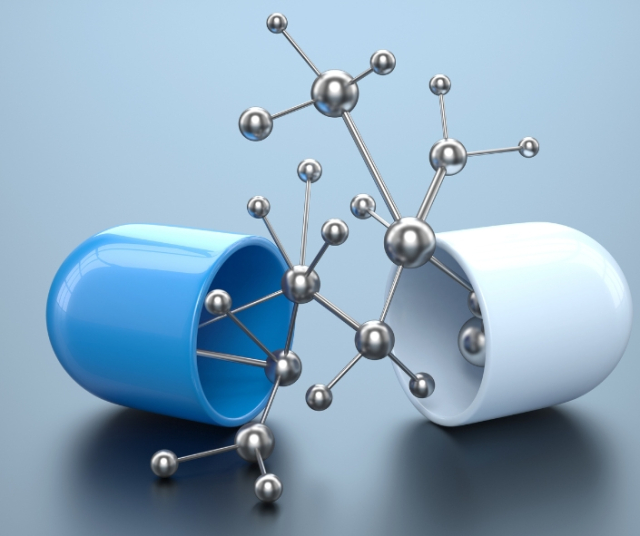Nanotechnology, a scientific discipline that operates on the scale of nanometers, has emerged as a revolutionary field of research with potential applications in a wide range of sectors, from medicine to electronics.
Nanotechnology is defined as the manipulation and control of matter at the nanometer scale, that is, in the range of 1 to 100 nanometers. A nanometer is equivalent to one billionth of a meter. To put this into perspective, a human hair has a diameter of approximately 80,000 to 100,000 nanometers. At this scale, the properties of materials can change significantly compared to their larger scale form.
Origins of Nanotechnology
The origins of nanotechnology can be traced back to the groundbreaking ideas expressed by physicist Richard Feynman in his landmark speech "There's Plenty of Room at the Bottom" in 1959. Feynman, a visionary pioneer in quantum physics and Nobel Prize winner, proposed the possibility of manipulating and controlling matter on an extremely small scale, at atomic and molecular levels. This revolutionary concept laid the foundation for what would later be known as nanotechnology.
However, real progress in the field did not come until the 1980s, when scientists Gerd Binnig and Heinrich Rohrer developed scanning tunneling microscopy (STM). This technology allowed the observation and manipulation of individual atoms, giving scientists the unprecedented ability to work at the nanometer scale. The STM paved the way for the detailed exploration and understanding of material properties at the molecular level.
The discovery of fullerenes, sphere- or cylinder-shaped carbon molecular structures, in 1985 by scientists Robert F. Curl Jr., Sir Harold W. Kroto and Richard E. Smalley, also marked a crucial milestone in the development of nanotechnology. These nanomaterials opened new possibilities for creating structures on the nanometer scale with unique properties.
Current Applications of Nanotechnology
Current applications of nanotechnology span a diverse spectrum of sectors, demonstrating its versatility and revolutionary potential. In the medical field, nanotechnology has introduced significant innovations in the diagnosis and treatment of diseases. The use of nanoparticles in drug delivery systems allows for a more controlled and specific release of drugs, minimizing side effects and improving therapeutic efficacy. In addition, nanoscopic imaging techniques have led to advances in the early detection of diseases, providing more accurate and faster diagnoses.
In the electronics industry, nanotechnology has contributed to the development of more efficient and compact devices. Nanomaterials are used in the manufacture of smaller and faster electronic components, paving the way for device miniaturization and improved performance. This application extends to nanoelectronics, where the manipulation of materials at the nanometer scale has driven progress towards ultrafast devices with greater processing capacity.
In the environmental field, nanotechnology has become an invaluable tool. Nanometric sensors enable the detection and monitoring of contaminants at extremely low levels, facilitating accurate assessment of water, air and soil quality. Furthermore, nanomaterials are actively researched to improve efficiency in energy capture and storage, thus contributing to more sustainable solutions in the energy sector.
In the materials sphere, nanotechnology has led to notable advances in the creation of materials with exceptional properties. Carbon nanotubes, for example, are cylindrical structures with unique mechanical and electrical properties, making them essential components in the development of lighter and stronger materials.
Nanotechnology in Environmental Research
Nanotechnology has also become a crucial tool in environmental research. The ability to control matter at the molecular level has led to the development of nanometric sensors capable of detecting contaminants at extremely low levels. These sensors make it possible to monitor the quality of water, air and soil with unprecedented precision.
Future Horizons: Emerging Applications
As nanotechnology advances, new possibilities are opening up in various fields. In medicine, nanotechnology promises to revolutionize the diagnosis and treatment of diseases, allowing more precise and less invasive interventions. Nanorobotics, a branch of nanotechnology, even raises the possibility of nanometric devices that can perform medical tasks inside the human body.
In the energy industry, nanomaterials are being investigated to improve the efficiency of energy capture and storage, as well as to develop lighter and stronger materials for the construction of next-generation solar devices and batteries.
In electronics, nanotechnology could lead to the development of quantum computers, capable of performing calculations at speeds unimaginable with current technology. Additionally, nanoelectronics offers the possibility of ultrafast, ultrasmall devices that could transform computing.
Ethical and Environmental Challenges
Despite the exciting possibilities it presents, nanotechnology also poses ethical and environmental challenges. The possibility of manipulating matter at the molecular level raises questions about the long-term safety of nanomaterials and their interaction with the environment. Furthermore, nanotechnology applied to medicine raises ethical questions about privacy and genetic manipulation.
The risk of nanomaterials becoming toxic or having unexpected side effects has also led to a debate about the need for regulations and standards in the use of nanotechnology. The scientific community and policymakers are working together to establish guidelines that balance technological advancement with safety and ethics.
